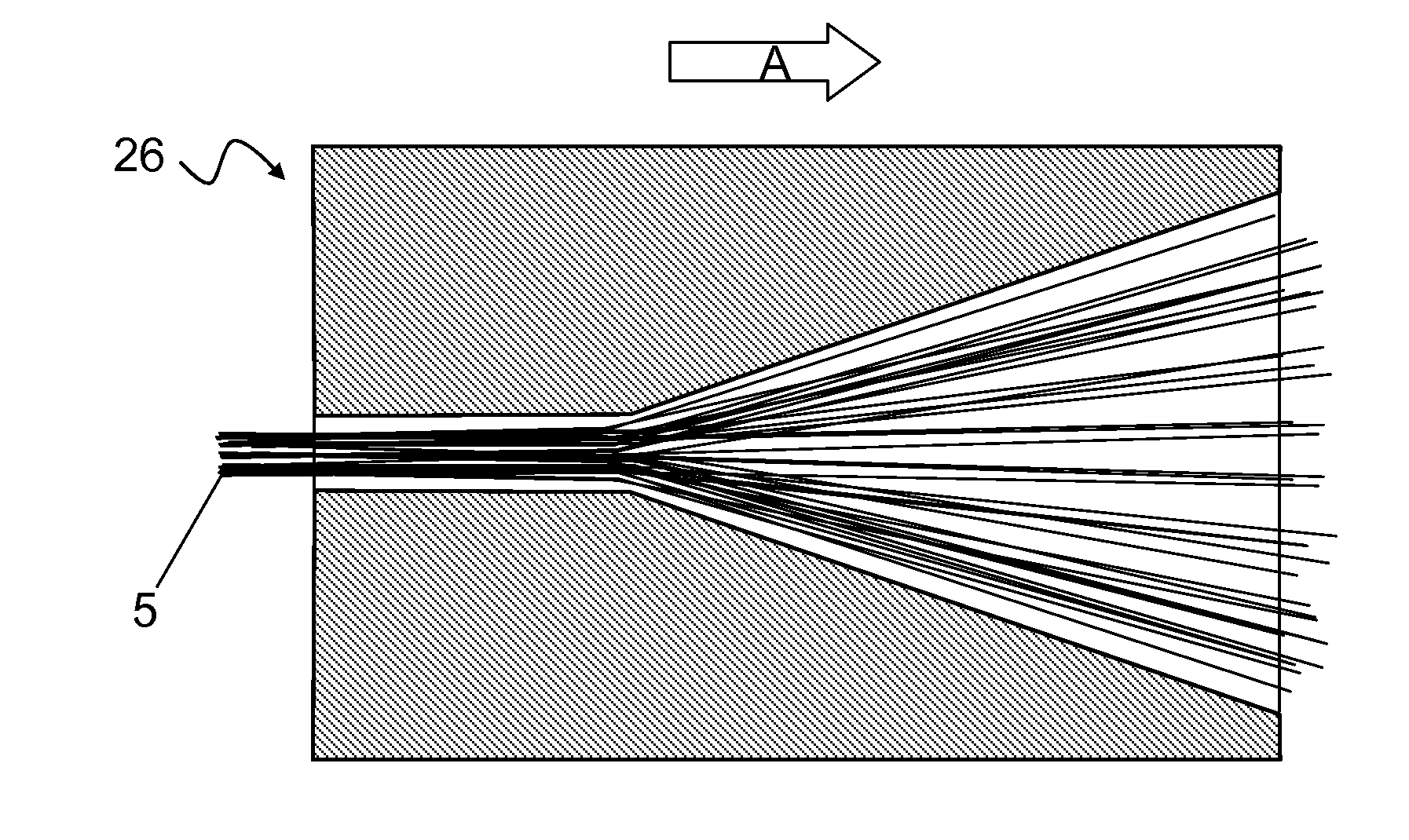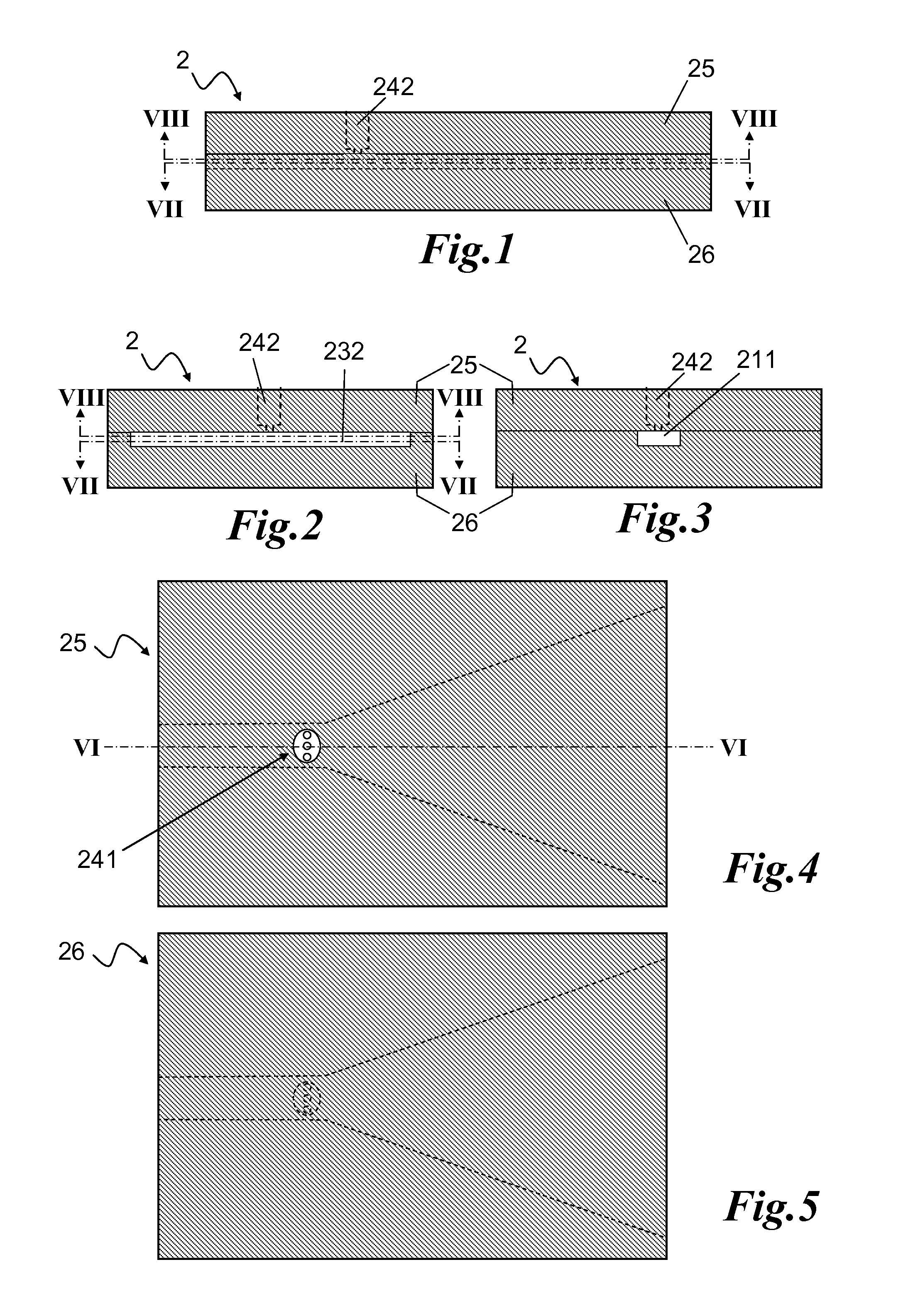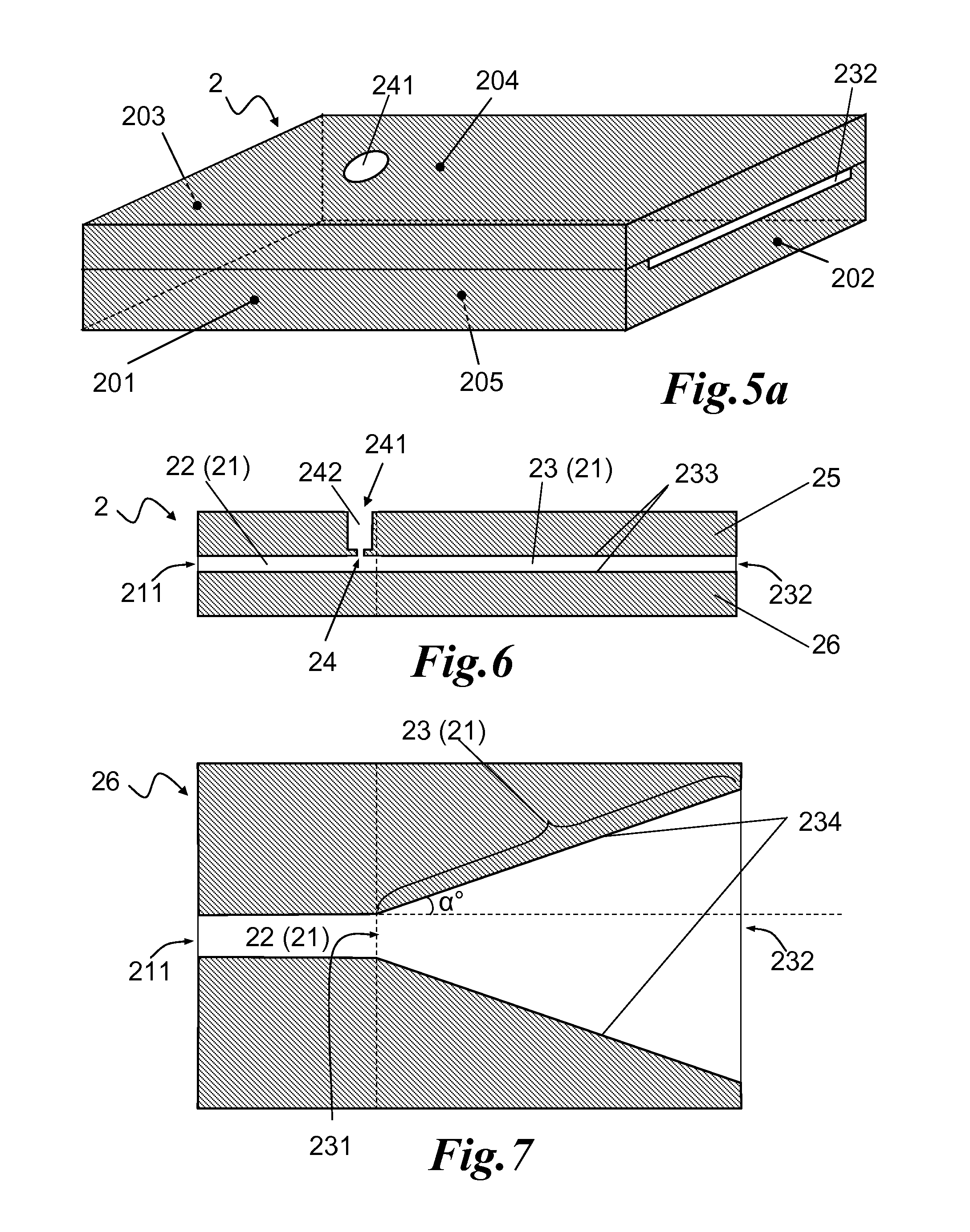Method and Equipment for Reinforcing a Substance or an Object with Continuous Filaments
a technology of continuous filaments and materials, applied in the field of improving the process of reinforcing a substance or an object with continuous filaments, can solve the problems of affecting the quality of the product, etc., and achieves the effects of high operation speed, short space, and high performan
- Summary
- Abstract
- Description
- Claims
- Application Information
AI Technical Summary
Benefits of technology
Problems solved by technology
Method used
Image
Examples
example 1
[0128]A spreader assembly according to the present invention was arranged in a manner to have one passageway, enabling one inlet opening for glass fiber strands (SE4220 direct roving).
[0129]The passageway comprised an inner channel of rectilinear shape and a divergent zone and had a total passageway length of 60 mm, with the inner channel having dimensions of 30 mm×6 mm×0.6 mm followed immediately by the divergent zone having 30 mm in length with a divergence angle of about 26.6°, leading to dimensions of 30 mm×0.7 mm for the exit. The strand went through the inlet opening of 6 mm×0.5 mm, which was also the start of the inner channel of rectilinear shape of the passageway, and one exit end of 30 mm×0.7 mm, which was also the exit of the divergent zone of the passageway. The air, at 0.8 bar pressure, was supplied to the passageway through an air through hole leading to the inner channel of the passageway. The air through hole led to three finer holes of 1 mm diameter each, arranged a...
example 2
[0130]A spreader assembly according to the present invention was arranged in manner to have four passageways, enabling four inlets for glass fiber strands (SE4220 direct roving). Each of the four passageways comprised an inner channel of rectilinear shape and a divergent zone and had a total passageway length of 60 mm, with the inner channel having dimensions of 20 mm×6 mm×0.6 mm followed immediately by the divergent zone of 40 mm in length with a divergence angle of about 20.6°, leading to dimensions of 30 mm×0.7 mm for the exit. Each strand went through one inlet opening of 6 mm×0.5 mm, which was also the start of the inner channel of rectilinear shape of the passageway, and one exit end of 30 mm×0.7 mm, which was also the exit of the divergent zone of the passageway. The air, at 1.0 bar pressure, was distributed to the four passageways through their respective air through holes. Each air through hole led to three finer holes of 1 mm diameter each, arranged across the channel widt...
example 3
[0131]A spreader assembly according to the present invention was arranged in a manner to have six passageways, enabling six inlet openings for glass fiber strands (SE4220 direct roving). Each of the six passageways comprised an inner channel of rectilinear shape and divergent zone and had a total passageway length of 60 mm, with the inner channel having dimensions of 20 mm×6 mm×0.6 mm followed immediately by the divergent zone of 40 mm in length with a divergence angle of about 20.6°, leading to dimensions of 30 mm×0.7 mm dimensions for the exit. Each strand went through one inlet opening of 6 mm×0.5 mm, which was also the start of the inner channel of rectilinear shape of the passageway, and one exit end of 30 mm×0.7 mm, which was also the exit of the divergent zone of the passageway. The air, at 1.5 bar pressure, was distributed to the six passageways through their respective air through holes. Each air through hole led to three finer holes of 1 mm diameter each, arranged across t...
PUM
| Property | Measurement | Unit |
|---|---|---|
| angle | aaaaa | aaaaa |
| angle | aaaaa | aaaaa |
| angle | aaaaa | aaaaa |
Abstract
Description
Claims
Application Information
 Login to View More
Login to View More - R&D
- Intellectual Property
- Life Sciences
- Materials
- Tech Scout
- Unparalleled Data Quality
- Higher Quality Content
- 60% Fewer Hallucinations
Browse by: Latest US Patents, China's latest patents, Technical Efficacy Thesaurus, Application Domain, Technology Topic, Popular Technical Reports.
© 2025 PatSnap. All rights reserved.Legal|Privacy policy|Modern Slavery Act Transparency Statement|Sitemap|About US| Contact US: help@patsnap.com



